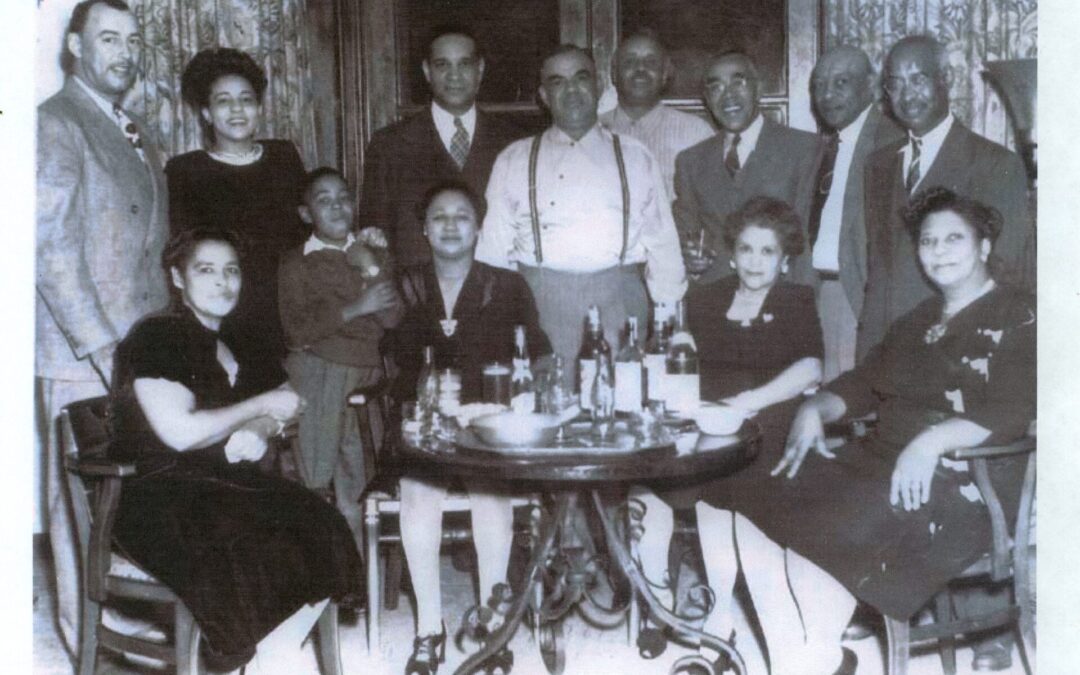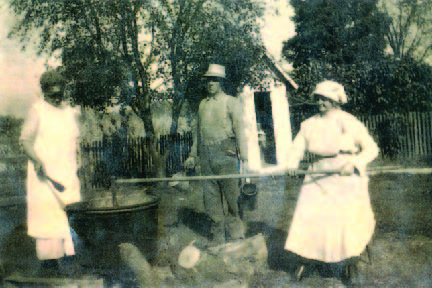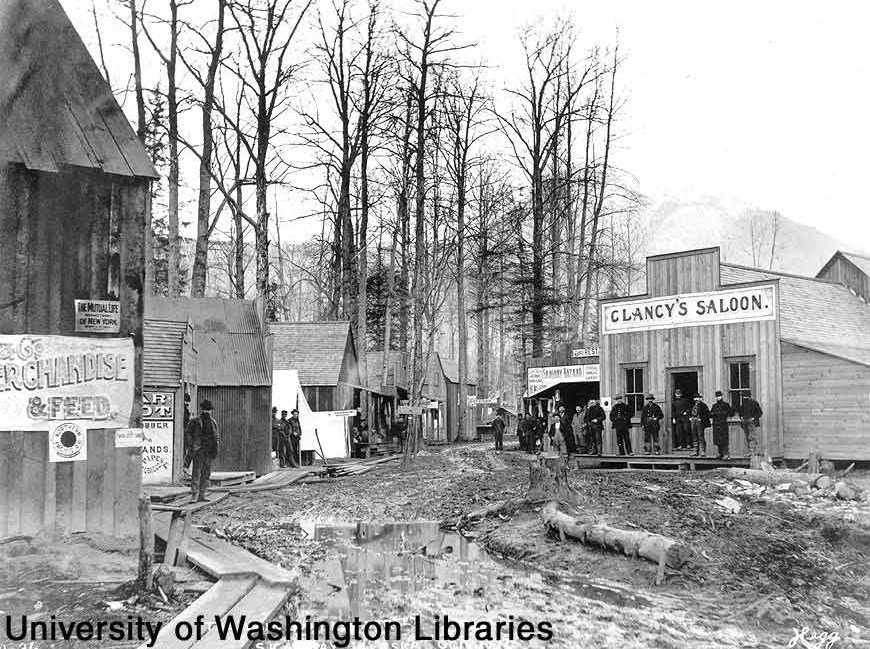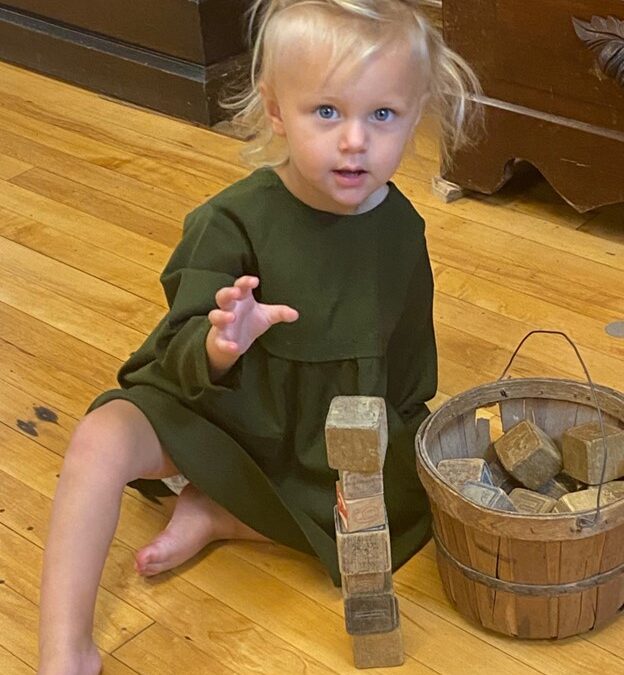


Researching Divorce Records
We talk a lot about marriage records, the different types and how to locate them. But when working on genealogy, sometimes we find the other side to marriage, divorce.
Divorce records are not as plentiful as marriage records and not as easily accessible on the internet, though more records are being added every day. The records do exist, and they can yield genealogical information that cannot be obtained elsewhere.
“But there weren’t any divorces in days gone by.” Oh, yes, there were, and more than we would think. The Marshall County Museum has one four-drawer file cabinet of divorce records before 1900, and 15 shelves of records after that date. More modern divorce records are located at the courthouse.
Regarding genealogy, the older divorce files are going to be the spiciest, as, not being concerned with political correctness, details were not censored. Divorce records now usually do not contain salacious details.
The Louisville Courier-Journal dated May 26, 1856, gives a harsh picture of my ancestor B. H. Cruzan, a teacher in Floyd County, IN. He asked for a divorce from his wife. The judge decided that he was not entitled to a divorce, but that his wife was, on the grounds of assault and battery, neglect of his family, and general moroseness and unkindness. The judge’s censure upon him as a teacher in the public schools was “cutting and severe.” His ex-wife moved to New Orleans and was thereafter listed as a widow on the census records. He later married again, and it lasted for the rest of their lives. Hopefully he was a better husband the second time around.
A cousin of my grandfather’s stated in her divorce petition that her husband would leave the house and be gone for days, coming back in a drunken condition. He went away from home every Saturday night. He associated with women of “evil name and bad repute.” He was arrested with a woman at a hotel and was prosecuted and tried in the police court on the charge of fornication (it should have been adultery). He abandoned his expectant wife when their child was ill and said that their coming baby was not his. They were divorced. But there’s no accounting for human nature. Two years later she married him again, and they stayed married for the rest of their lives, celebrating their 50th wedding anniversary. (But it was really only their 48th.)
These examples from my own family show the man to be at fault, but both partners can instigate a divorce. Of course, sometimes a person didn’t bother to end one marriage before going on to the next one. I recently did some research like that for someone. First Husband and First Wife were married for a few years. By the time First Husband filed for divorce, First Wife had been married to Second Husband for three years, and First Husband himself had been married to Second Wife for a year. First Husband used both of First Wife’s married names in his petition for dissolution, saying she was living with Second Husband as his wife. First husband then married his Second Wife again after the divorce and went on to marry two more times. First Wife later married a third time. The researcher was from First Wife’s second marriage and was looking for a divorce record for her parents. But though there was a marriage record for the second marriage, there may not have had to be a divorce if she was still married to her First Husband. Luckily, I didn’t have to sort that family out, only just copy the records and wonder.
What can a divorce file do for us in a genealogical way? It can confirm a lot of things. The petition for dissolution contains the date of the marriage and often the place. It will list any minor children, and sometimes may mention older children, or state that there were no children of the marriage. It may say that a child in the home is a child of one spouse, but not the other. If there is any real property involved, it will state where that property is located, which leads to deed records. If there has been an earlier marriage or marriages, and an earlier divorce or death of a previous spouse, especially if there are children, it will sort out who came from whom.
An obituary I came across listed the second wife and all the children. But which child came from which marriage? The divorce record from his first marriage listed the children from that marriage, and with that I was able to clarify the “his, hers and theirs” for the children.
Where are we going to find divorce records? To end a marriage, one had to go through the court so there are court records, located in the county where the divorce was granted. It may or may not be the same county where the marriage took place.
Early divorce actions can be found in dockets, minutes and case files of the county, circuit or district court. Sometimes they were in chancery, common pleas, domestic, probate, superior or supreme judicial courts. The clerk of the court is the holder of the records.
Very often older records are transferred to an archive. I found one of the above divorce files in the St. Joseph County archives and one here at the Museum. Sometimes they may be transferred to a regional or state archives or library.
Generally, divorce records are considered part of the public record. But most states limit access to them because they may contain personal or sensitive information.
Applicant forms for a subsequent marriage may have information as to whether the person has been married before, and how many times. I have traced a couple of relatives to marriages across the country based on their subsequent marriage applications. A warning: sometimes the person conveniently “forgets” how many times they have been married and gives a lesser number. But you know that it is not true, because you found additional marriages for them.
Newspapers mention legal notices. In the past they would sometimes give accounts of the divorce or mention a separation of a married couple. The story about my ancestor came from the newspaper for all the world to see and for his great-great-granddaughters to find.
There are personal accounts and stories of family scandals whispered about in the family that you have heard, partially factual and maybe not. But if there is a rumor, there might be evidence somewhere of a painful event in the family which contains genealogical information. And that’s what we want. We are not scandalmongers. We just want to know about our families. We all have faults, and so did our ancestors, including B. H. Cruzan.
Come into the Museum library and get help to research your genealogy and history questions. We are available Tuesday through Saturday from 10:00 until 4:00, at 123 N. Michigan St., Plymouth. Call us anytime at 574-936-2306, or access help through our website at www.mchistoricalsociety.org.

Home Made Remedies
Quite often something really interesting surfaces as we go about our preservation and archiving efforts. A paper turned up recently with hand-written remedies (and gardening advice), mixed with a couple of newspaper clippings from 1912. There is also a recipe for apple butter! I have included it, but don’t count on it for a cure for anything but dry toast. Please note that these recipes are written as found.
- Cure for pneumonia or lung fever: Chopped onion. Vinegar and graham flour. Put on stove and heat.
- Rheumatism cure: Aunt Clara Barlow. Iodide of potassium 15ç worth in ½ pint water. Take 1 tablespoon before meals.
- Rheumatism bladder trouble: Fluid extract dandelion ½ oz. Compound Kargon (a commercial prescription) 1 oz. Compound syrup of sarsaparilla 3 oz. Take 1 teaspoon after each meal and at bedtime. “Is all right for I have taken it.”
- Yellow jaundice: Go and get south running water and take one egg.
First day dose: Take one part of the white of the egg, beat it up with 3 tablespoons of the water and drink it.
Second day dose: Take another part of the egg white and beat it up with 3 tablespoon of the water and drink.
Third day dose: Take the last part of the egg white and beat it up with 3 tablespoon of the water.
Use the same egg each day. The white is in three parts. And take one part each day. Sure cure. 1912.
- Sore throat cure: Strep throat: 1 qt. hot water. 1 tea. soda. 1 tea. salt. ¼ tea. carbolic acid.
- To keep bugs from melons and pickles: Take a moth ball and break in two and put in bottle around hill. Or also plant an onion in hill.
- To make good apple butter: Boil 30-gallon cider down to 12 or 13 gallons. Put in 16 gallons sliced apples, few at a time, until all in, and then boil 3 or 4 hours down to about 9 or 10 gallons. Add 12 ½ lbs. granulated sugar. Cook until sugar is thoroughly dissolved.
Here is cure for poison ivy that never fails: boil one-half pint of shelled oats in water until the water is real dark. Then wash the poisoned parts with the water. It does the work without any pain. M. L. B., Clark Co., Ind.
Sand and sawdust make a good bed for flowers like the rhododendron, which require an acid soil.
My Coal-Oil Cure-All by S. E. Bandy.
Coal oil (kerosene) is a commodity found in every farm home, yet its many uses and benefits are known only to a few people. I have saved many a fine watermelon patch from destruction by the striped beetle by mixing coal oil and wood ashes – one part coal oil, by measure, to twenty parts ashes – and putting it on the hills around the roots of the melons.
The coal oil must not touch the vines, and one large spoonful to a hill is sufficient. The bugs will depart immediately. It should be repeated after each rain.
A handful of coal oil and salt mixed and dropped into each mole run will cause them to change their location. A peck of lime thoroughly mixed with a gill (one quarter of a pint, or four ounces) of coal oil and spread lightly around the early cabbage plants will prevent the cutworms from destroying them. When it is hoed in later, it seems to act as a fertilizer.
With coal oil I cure scaly leg in chickens by applying it directly with a feather. I also find a mixture of coal and lime used generously around over the chicken house will prevent mites.
We do not recommend trying these remedies at home, but as always, we find that our ancestors were hardy and ingenious people. Our archives are full of the stories of incredible people, and we love to share. Stop by the Museum anytime! Our hours are Tuesday through Saturday from 10 until 4.

Letter Home From the Klondike
The archives here at the Marshall County Historical Society and Museum are full of stories of people living their daily lives, throughout our history. This article, first published in the Marshall County Independent, on February 4, 1898, on page one, shows the interest locals felt in the gold exploration in far-off Alaska. The headline was “Frank Thomas Writes Home,” and we have lightly edited for clarification.
SKAGWAY, ALASKA, January 7, ’98
John W. Thomas, Plymouth IN
Dear Parents,
Well here it is 1898, and I am 3,500 miles from home, my people and friends at Plymouth, though that does not count much in a fast-going age as this. Everything passed off here during the holidays as usual. Just as it did at home perhaps, only that outside appearances here recognize no holidays, or Sunday, all days are alike to this surging throng. Everybody is hurrying hither and thither as if they had lost something and were trying to find it, possibly lost a dog. There are so many dogs here it would be hard to find one unless he had a special mark, and they all have special marks. There are dogs everywhere here, and I never thought that a dog was as useful an animal for drafting as they are. Dogs are worth money here now; a good dog can pull from 100 to 500 pounds on a sled depending on the condition of the roads and the dog of course. They usually work them six in a team single file, and they go on a trot most of the time. They are using all kinds of dogs, but the big long-haired fellows are the best. Except for perhaps the native dog, Friskies as they call them, are the best of all as they can stand more hard knocks and go longer without feed. They look just like gray wolves and are fighting half their time at work or play.
The weather is fine here; there is just a little snow, hardly enough for good sledding, but I see they are using bob sleds instead of wagons. They are now sledding up along the river with small hand sleds and are using the ever indispensable and useful dog, as well as horses to sled over the summit. People are coming in on every boat. There has been a number of boat loads landed here within the last two or three weeks. Three, the Elder, the Seattle and Topeka boats brought over 1,500 people for Skagway and Dyea, and the rush has not commenced either. Two more steamers are now due, and they will be crowded to full capacity. They say that nearly all the boats on the Pacific coast are going to run up here next summer, and a number are coming around Cape Horn and some from Europe. If there are 500,000 people coming to Alaska and the Northwest Territory this next summer. Four out of five will land at Skagway, which is an assured fact according to estimates made here, and if that does not mean a boom for Skagway, then it does for Alaska. There are a number of people coming out from Dawson every few days. I have seen men who I knew on the trail this fall and most of them give very flattering reports about the weather down the lakes and river. They say it is very cold but dry. Not very much wind, especially where they are sheltered by the mountains. They report also that provisions are very scarce and that many more will have to come out of the country before spring. These men came all the way on ice. Some of them have dogs to pull their grub and blankets and have to pull enough to last them out. They all agree that it is a tough proposition and further say that it is an absolute impossibility for anyone to move an outfit down on the ice. As it is all one can do to move as much as it takes to last them while they are coming out. So, I think the best and safest thing anyone can do is to wait until the ice breaks up in April or May and go down in a boat which will be much the quickest and the cheapest. You wrote me that there were a number of people coming from Plymouth and vicinity. I shall be ever so glad to give them all the information concerning the trail and country that I can. Many will go via St. Michaels, that is much the easiest way, but it is much the costliest as well as much the longest. Those who go down by the lakes as soon as the ice breaks up will reach the gold fields fully a month earlier that any steamers can get up from St. Michaels. In the spring it will be comparatively easy to reach the lakes with an outfit from here (Skagway) as the wagon road will be completed to the summit and from there one can sled for 15 miles on Summit Middle and Shallow Lakes and from there to Lake Bennett. There is now no good sled trail.
People are now moving goods over at one tenth the expense that it cost us last fall. To say nothing of the labor and exposure, as well as the risk of life that we were subjected to. No doubt we ought to be whipped for being so crazy and foolish to attempt to cross a trail as this Skagway trail when we went in, but how could we know until we had gone beyond a return limit. I wonder now that men could endure the hardships we were compelled to undergo. Horses died by the thousands from the effects of incessant, chilling rains, exposure and lack of rough forage, as it was impossible to carry hay along. Usually when a horse went down in the mud he had either given out or had a broken leg and had to be shot. It rained about 21 days out of 30 while we were in the Pass. Our outfit consisted of eight horses, about 6,000 pounds provisions, tent, tools and clothing for four men, but now it is different. That amount can be moved over the summit in possibly five days on the wagon road now nearing completion.
But please don’t understand me as advising anybody to come who has not already made arrangements to come. It is all a gamble, with the great majority of people who go in, and anybody intending to come must consider that there are many chances to lose as well as win. They will have to take even chances with possibly 500,000 people who will go down the Yukon either ahead or to follow after, all in the next spring and summer.
Father, I wrote the foregoing thinking you might want to publish a little. I did not want to write much to the papers concerning this country, nothing flattering in the least. I don’t want to influence anyone who would not come otherwise. It will be a lottery with everybody, especially the tender foot with small or insufficient means who have many more chances to lose than to win.
I am sure there will be plenty of work here in Skagway this summer, wages depending entirely on the amount of laborers coming in. Common labor $1.50 and board, skilled labor $4 and $5. Now don’t have any fears, Mother, about robbers and foot-pads (robbers in foot) bothering here; they have to lay low and nearly everybody carries a revolver, and grafters are afraid to act. As long as I have been in the country, I have never seen a quarrel or a fight. Well, goodbye from your loving son, Frank L. Thomas.

Hazel’s Dress
Money was hard to come by in 1924 when Fred and Etta Jane (Berkeypile) Brugh were raising their young family in a remodeled log cabin two blocks northwest of the Marshall County Courthouse in Plymouth. He worked for the Pennsylvania Railroad, then the Plymouth Radio Company, while she cared for their four daughters. Frugality necessitated handmade then hand-me-down clothes for Myrtle, Goldie, Hazel and baby Helen.
Fortunately, Etta Jane was a skilled seamstress who could sew, knit, crochet and tat—the nearly lost art of making delicate lace from thread. She even saved the cloth bags flour came in, dyed the rough material and transformed the bags into tiny dresses decorated with embroidery.
Three-year-old Hazel wore a brown sack-cloth dress that miraculously has survived for nearly a century, and now fits her great-great-granddaughter and namesake, Hazel Jane Seltenright of Plymouth. She was photographed wearing the dress on August 12th before it was donated to the Marshall County Historical Society and Museum with a vintage basket of wooden blocks.
Two little girls named Hazel wearing the same dress nearly a century apart are a wonderful testament to Etta Jane’s handiwork. Amazingly, the 98-year-old brown flour sack cloth dress stitched together with love by Hazel’s great-great-great-grandmother doesn’t even look old.
This sweet dress is a wonderful addition to our clothing collection. The tiny hand stitching and embroidery tell the story of a mother’s love for her children, and her determination to be resourceful during difficult times. These are the types of stories we record at the Marshall County Historical Society and Museum. In time, we’ll be telling today’s stories too. Come in soon and enjoy the history of this special place.
Mary Ann (Travis) Wyand Garber is Hazel Brugh’s daughter. She grew up in Plymouth, worked for The Pilot-News in the mid-1970s and now lives in Lebanon.

The Broadway Doesn’t Stop at Plymouth
In fall 1957 I was a first-year cadet at Culver Military Academy. Our family then lived in Hamilton, OH, where my dad was employed as director of engineering for Baldwin-Lima-Hamilton, the amalgamation of Baldwin Locomotive Works, Lima Locomotive Works and other companies. At the time I had little knowledge of – or appreciation for – Dad’s close personal association with senior officials of most eastern railroads, including the mighty Pennsylvania.
My folks visited me on the weekend of Culver’s annual “Fall Festival,” during which Dad mentioned that Sunday evening he’d be going on to New York for a meeting of the American Society of Mechanical Engineers. He planned to catch the Broadway Limited at Plymouth, Being 15-years-old and having read all the copies of Trains he brought home, I was expert enough in “things railroad.” I knew that PRR’s flagship passenger train was really hot stuff. My excitement rose knowing I’d soon see this railroad icon up close.
On Sunday afternoon we drove to Plymouth, arriving well ahead of Dad’s estimated arrival time of train 28. Since the Broadway Limited was scheduled to run non-stop from Englewood to Fort Wayne, the public timetable showed no station stop at Plymouth, although the county seat of Marshall County was a busy railroad junction in the late 1950s. In addition to the Pennsy’s very busy main line between Chicago and the East, the PRR branch between Logansport and South Bend crossed not only the main line but also Nickel Plate Road’s Argos-to-Michigan City branch.
Plymouth Tower was manned around the clock. I dutifully deposited Dad’s luggage on the platform and proceeded to the tower to check the Broadway Limited’s progress. Eyeing my Culver uniform, the veteran operator, who probably had seen it all, finally responded to my query: “Son, the Broadway doesn’t stop at Plymouth.”
Applying my vast knowledge of Pennsylvania train numbers, I retorted, “Sir, No. 28 will stop here tonight to pick up my father, who’s waiting in the car.” Figuring there was no possibility I could be correct, he calmly pulled the scissor phone toward him and contacted the Fort Wayne Division dispatcher:
DISPATCHER: (shuffling through papers): Well, YEAH, Gene. Got a message 28’s to pick up a Mr. Van Schwartz on the rear car. It was on time out of Englewood. Give me an OS when he leaves.
“OPERATOR: Plymouth, got a rumor that 28’s gonna stop here tonight.
OPERATOR: Been around this road for 34 years, never seen this before.
DISPATCHER: Me neither, Gene. Me neither.
Maybe, just maybe, Gene was going to take this upstart 15-year-old seriously. After all, he was part of the plot to stop the Pennsylvania Railroad’s premier passenger train at the small town of Plymouth. Still skeptical, he reached for the handset of Pennsy’s inductive Train Phone system.
OPERATOR: Plymouth to No. 28. Ya gonna stop here tonight?
ENGINEER ON 28: That’s right, Plymouth. We just hit the diamond at Hamlet and will be there directly. Have this guy ready for us to grab him.
OPERATOR: Been around this road for 34 years, never seen this before.
ENGINEER ON 28: Me neither, Gene. Me neither.
OPERATOR: (to me): Your father must be somebody to pull this off. You get him ready, or I’ll catch hell for the delay.”
I smiled, waved, and headed out the door and down the tower steps. Our family name was not to be sullied by delaying the Broadway Limited.
The orange glow of the setting sun on the western horizon soon was replaced by the orange glow of an eastbound headlight. The air filled with blue smoke from heaving braking as three E units thumped over the crossing diamonds. There is no way this train would stop on the platform! The growl of the passing Es was quickly followed by the subdued interior lights of Pullmans, a double-unit diner and more Pullmans – the scene made even more magical by the clouds of brake-shoe smoke. As the observation car approached, Dad positioned himself to board the train.
In a technical sense, Operator Gene’s worst nightmare – the Broadway Limited stopping at Plymouth, IN – did not happen that night so long ago. The Broadway only slowed down to pick up my father! As the observation car drew near, I spotted a burly Pullman porter on the bottom step of the vestibule, right arm extended. In one deft move, the porter scooped up Dad – luggage and all – and deposited him on the step next to him.
From my vantage point, I could see the rear trainman yank twice on the communicating cord (handset radios were still years away). Six 567 diesels roared an answer as the veteran engineer accelerated the Broadway out of town. The observation car’s name, Mountain View, was clearly visible, and I turned east to watch the marker lights and illuminated Broadway Limited sign quickly disappear from sight. The entire event had taken less than a minute!
I never knew what Operator Gene reported to the train dispatcher regarding the “delay” to No. 28 and, in retrospect, I doubt the event ever made the next morning report in the sacrosanct halls of PRR’s Philadelphia headquarters. As I learned in the years to come, some things are better left unsaid or unreported.
(Note: So when the engineer said,” Have this guy ready for us to grab him,” that was exactly what he meant!)
